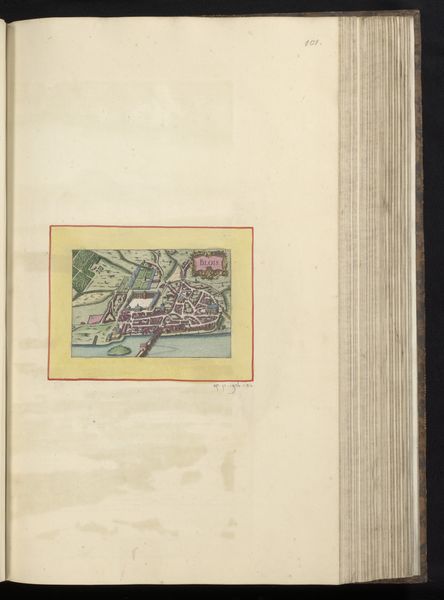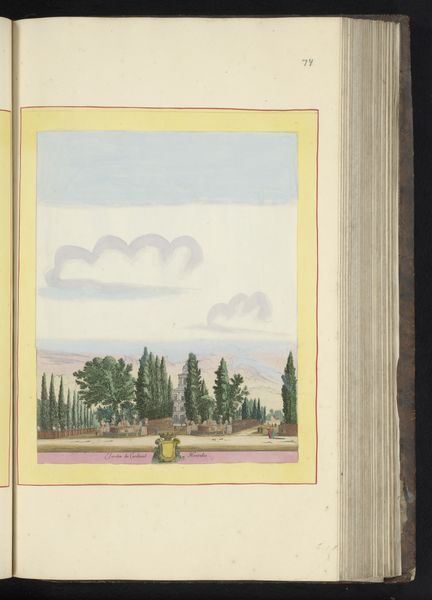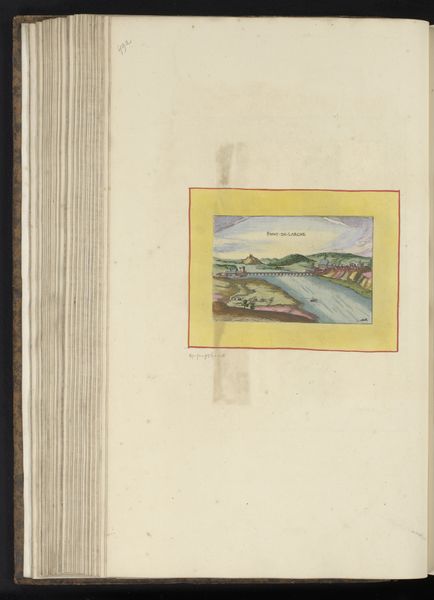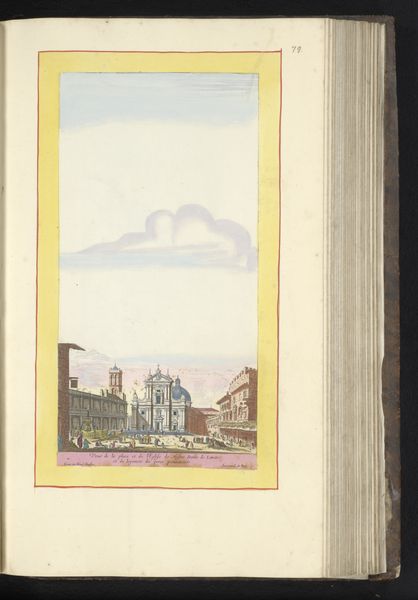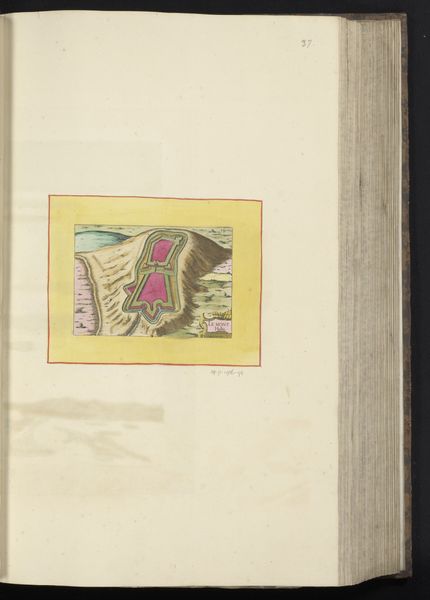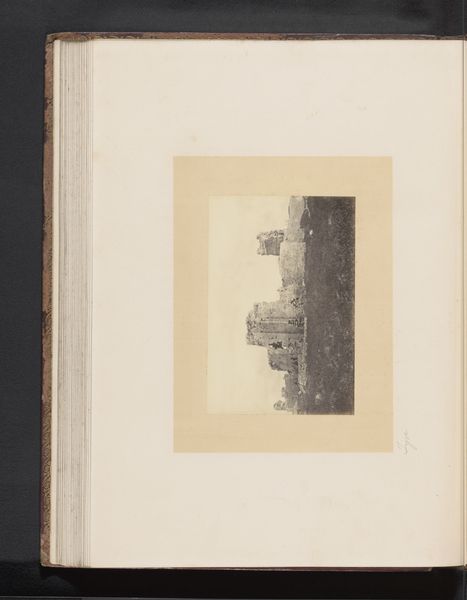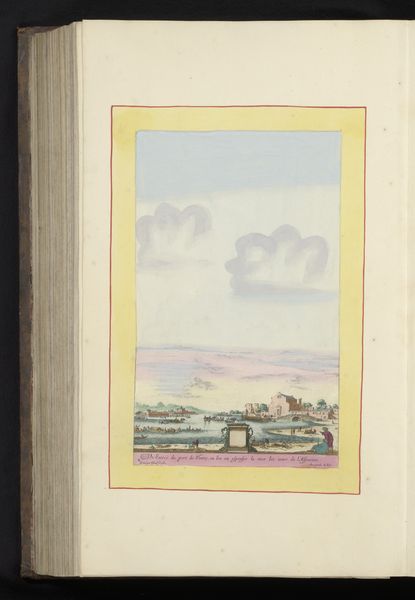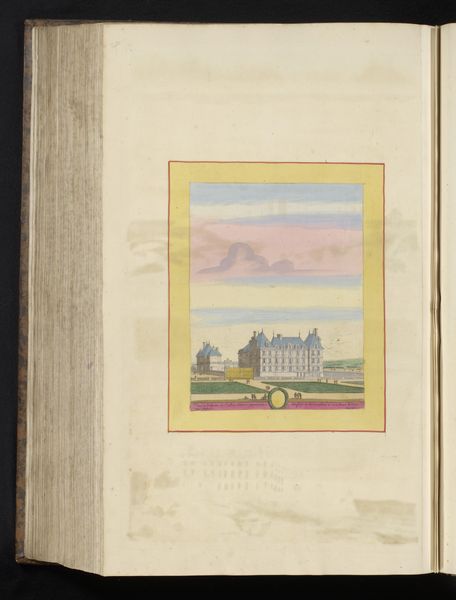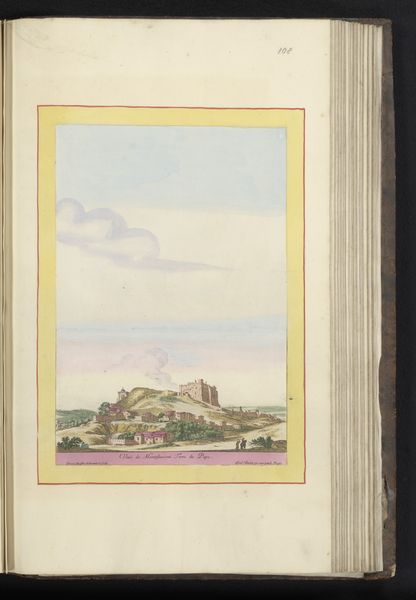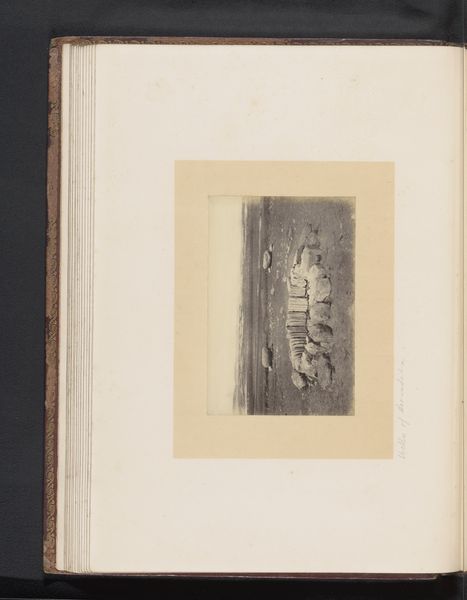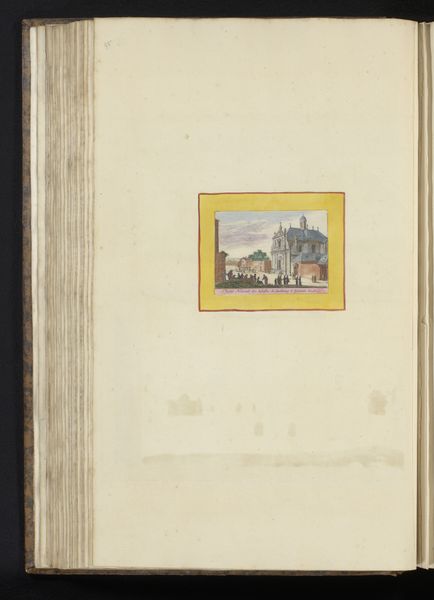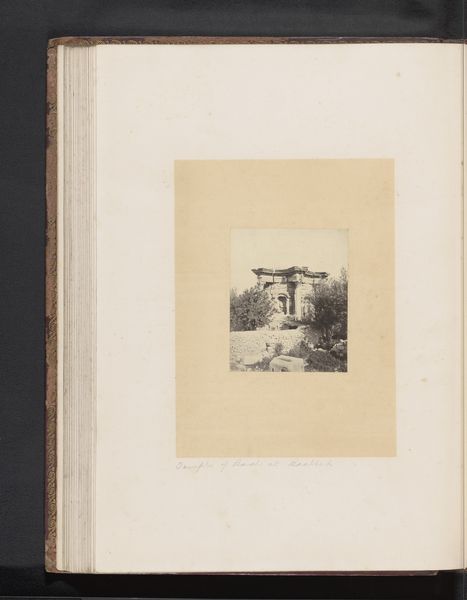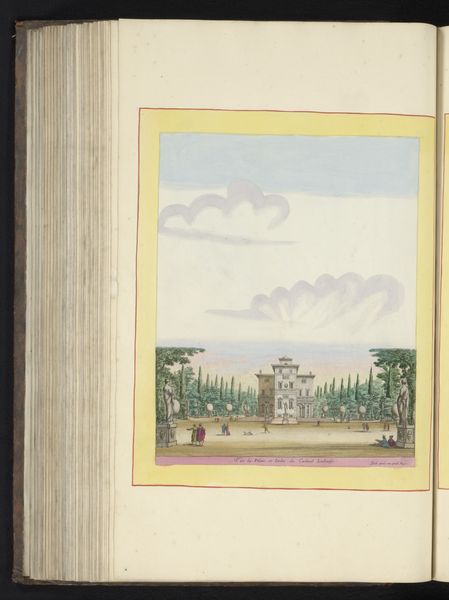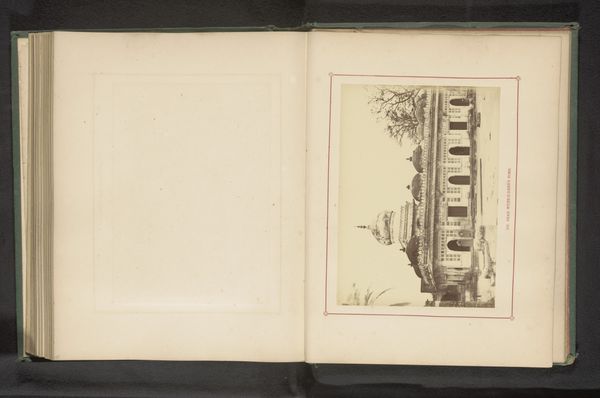
drawing, watercolor
#
drawing
#
baroque
#
landscape
#
watercolor
#
coloured pencil
#
watercolor
Dimensions: height 111 mm, width 121 mm, height 535 mm, width 310 mm
Copyright: Rijks Museum: Open Domain
Editor: Here we have Israel Silvestre's "View of One of the City Gates of Saint-Denis," a watercolor drawing from the late 17th century, housed at the Rijksmuseum. I find the size remarkable – a delicate miniature enclosed by bright yellow and burgundy borders. What do you see in this piece? Curator: Well, beyond the initial impression of a crumbling architectural feature, I am drawn to the artist’s process, the specific materials he employed to depict this urban landscape, the pigments available, the paper quality, and even the social conditions influencing Silvestre’s choice of subject matter. Think about the rise of printmaking and its influence on the mass consumption of imagery. Editor: So you are interested in the materials, the context... What was consumed here, what can we say about that consumption, in the 17th century? Curator: Indeed, the material act of making a drawing such as this presupposes an audience – a consumer of sorts, interested in a certain idealized vision, maybe of Paris. The drawing is on one of the book pages. The landscape tradition also often intersects with notions of land ownership, property, or dominion. Who held power, who commissioned the works. Do you think the work could represent or perform status or ownership for a social class? Editor: I see what you mean, almost like propaganda or a visual branding exercise for the city or certain families, displaying the city's gate not necessarily as it was, but maybe more glorious. And the colors suggest richness in this representation, and probably were luxurious too, when the image was created! Curator: Exactly! And how does Silvestre’s technique reflect or distort reality in ways that uphold the dominant power structures? How does this "Gate" become something symbolic rather than utilitarian? Editor: I guess by idealizing and selling an image, a product made of watercolors, lines, drawing expertise, the work transforms Saint-Denis's gate into an emblem of a certain social class. Fascinating. Curator: Precisely! We are compelled to reflect on how the creation and consumption of such artwork can perpetuate certain power dynamics and historical narratives.
Comments
No comments
Be the first to comment and join the conversation on the ultimate creative platform.
